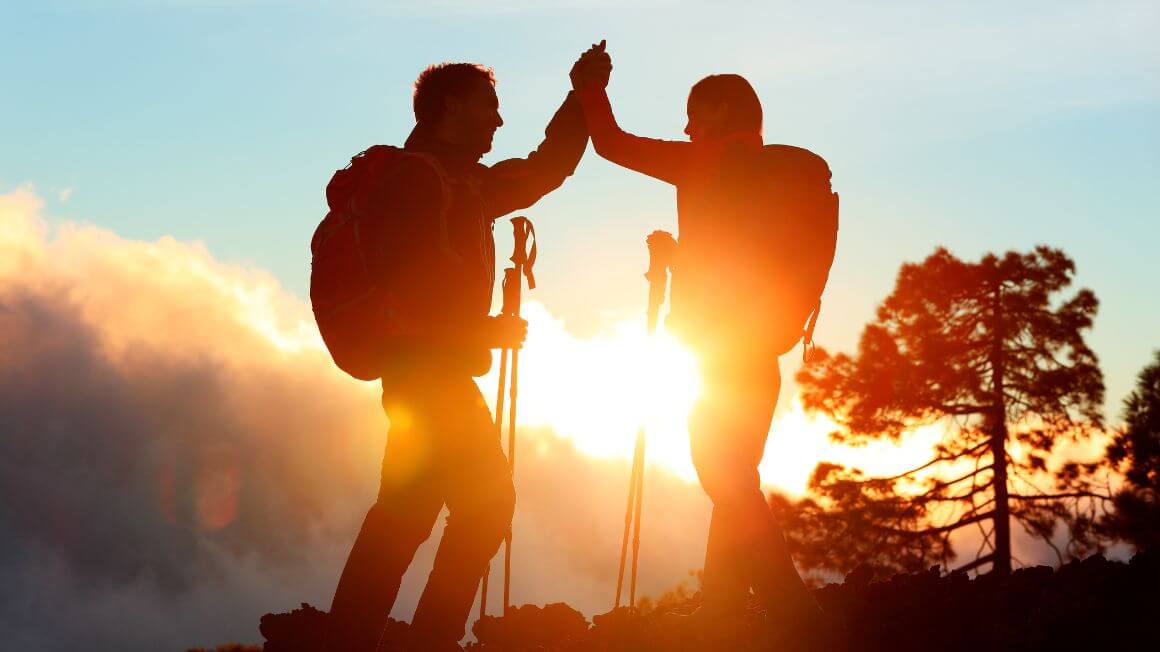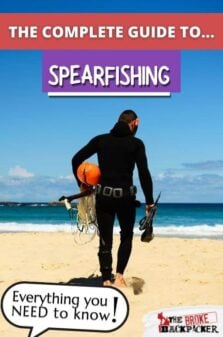Are you tired of the industrial food complex and its lifeless, icky tasting produce? Are you planning an epic, off the beaten path adventure that involves eating fresh fish roasted over the campfire each night?
Then you need to learn how to spearfish!
Dramatics aside, I strongly believe that spearfishing is a skill that belongs not only in a broke backpacker’s arsenal – but in all regular joes’ arsenals to provide sustainable food for themselves.
But you need to do it right. There are technical and ethical difficulties and dangers that you can’t avoid when it comes to spearfishing.
Though, armed with this bomb-ass guide, you will go from zero to hero. It’s chock-a-block filled with spearfishing tips for beginners and pros, as well as gear recommendations.
PLUS there’s a sprinkling of epic spearfishing destinations to get you pumped to hit the road and try a little ocean hunting yourself.
It’s time get stoked and get fishing. It’s time for the Broke Backpacker’s edition of Spearfishing 101: How to Spearfish for Beginners!
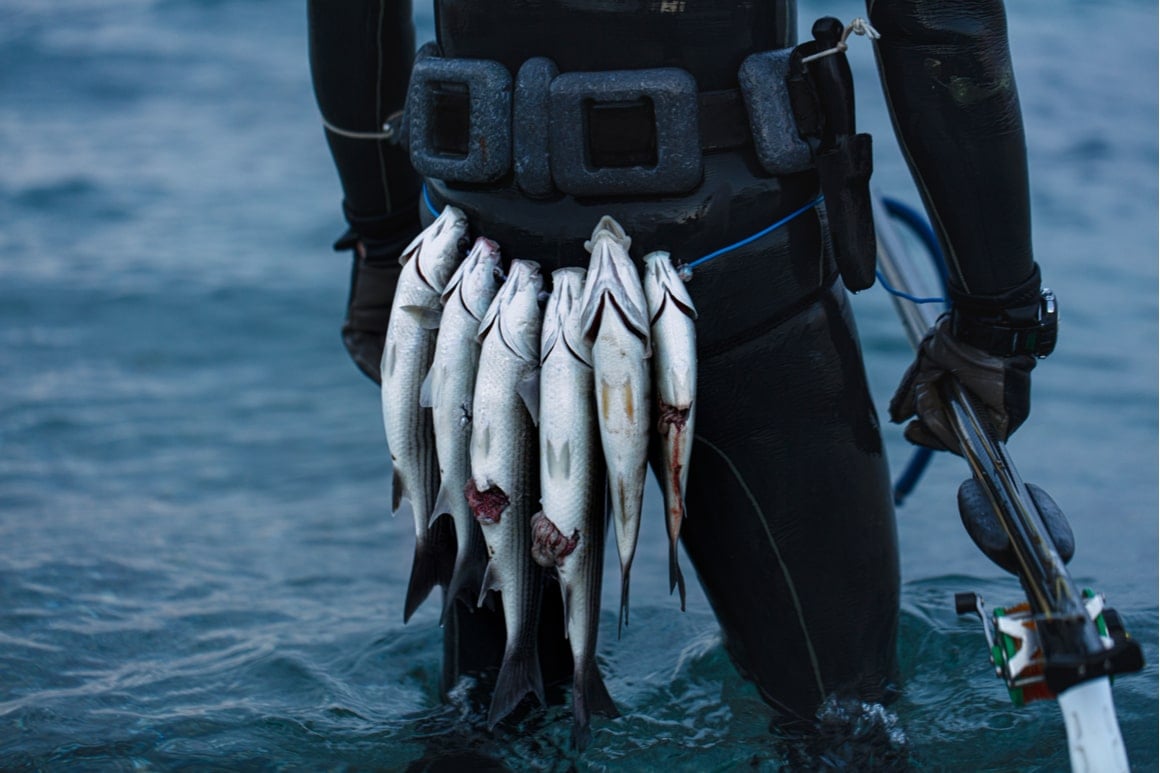
The Broke Backpacker is supported by you. Clicking through our links may earn us a small affiliate commission, and that's what allows us to keep producing free content 🙂 Learn more.
Why Learn to Spearfish?
“Geeeez, mate that smells bloody good!”
A fresh fish sizzles in sesame oil and the sun is making psychedelic colours as it sets over the ocean. Nice.
To me, this is what spearfishing is all about; it’s a sea to table way of providing food. But it’s also a way to build a community and to get in touch with being part of an interconnected ecosystem.
Before I get carried away with being all poetic, I’ll say that spearfishing is also an EPIC way of keeping fit on the road. It gets you swimming and free diving – two of the greatest things you can do for your health! Plus, spearfishing is a gateway into learning many new skills.

Being out on the ocean – maybe even living the boat life – gives you a new way of looking at the world. It’s quite something to be able to read the clouds, know the lobster rich nooks of the reef, and sense how a storm on one side of the ocean can affect your catch on the other side of the ocean.
It also makes you keenly aware of the pressure the oceans are under. You might start out wanting to shoot the biggest tuna EVER, but spearfishing will slowly turn you into a massive conservationist.
Spearfishing pushes you to go on off beat travel adventures and explore some of the most beautiful destinations in the world.
But still, at its core, it’s about bringing up a fresh fish or two and cooking up a feast. A feast enough for your mates to be like, “Yeah, alright I’ll hand it to you – that was goooood.”

Unlock Our GREATEST Travel Secrets!
Sign up for our newsletter and get the best travel tips delivered right to your inbox.
Sweet As, But What IS Spearfishing?
Spearfishing: The act of using a spear or speargun to penetrate and capture fish for consumption.
Let’s not mince words. When you pick up the speargun, you’re picking up a weapon with the intention of harvesting dinner. You will be ending the life of another living thing in order to add quality to your own.

Photo: Anonymous (WikiCommons)
Personally, I think this is an incredibly powerful way to connect with your food supply. There is more value in spearing, gutting, and cooking your own fish than there is eating a weakass burger from McDonalds.
In order to shoot the fish, you’ve got to become a fish. 😉
Spearfishing is more than just putting fish in the fryer. It involves a lot of skills: reading the weather, freediving, breath-holding, stalking and selecting prey, ocean currents, boat and navigation skills. And that’s not even starting on the cooking and cleaning of the fish!
Is Spearfishing Sustainable?
I absolutely believe spearfishing to be sustainable – it fits well with the ethos of responsible travel. But sustainability and ethics are not the same thing, so let’s break it down a little.
Spearfishing is unique in the sense that it allows you to specifically target the individual fish you want to take. The fish you shoot is the fish you intend to eat.
Even armed with all the knowledge about where in the water column you’re fishing and how to target the desired species, line fishing runs the risk of pulling up the wrong fish. The process of bringing the fish to the surface and cutting it free can still kill the fish.
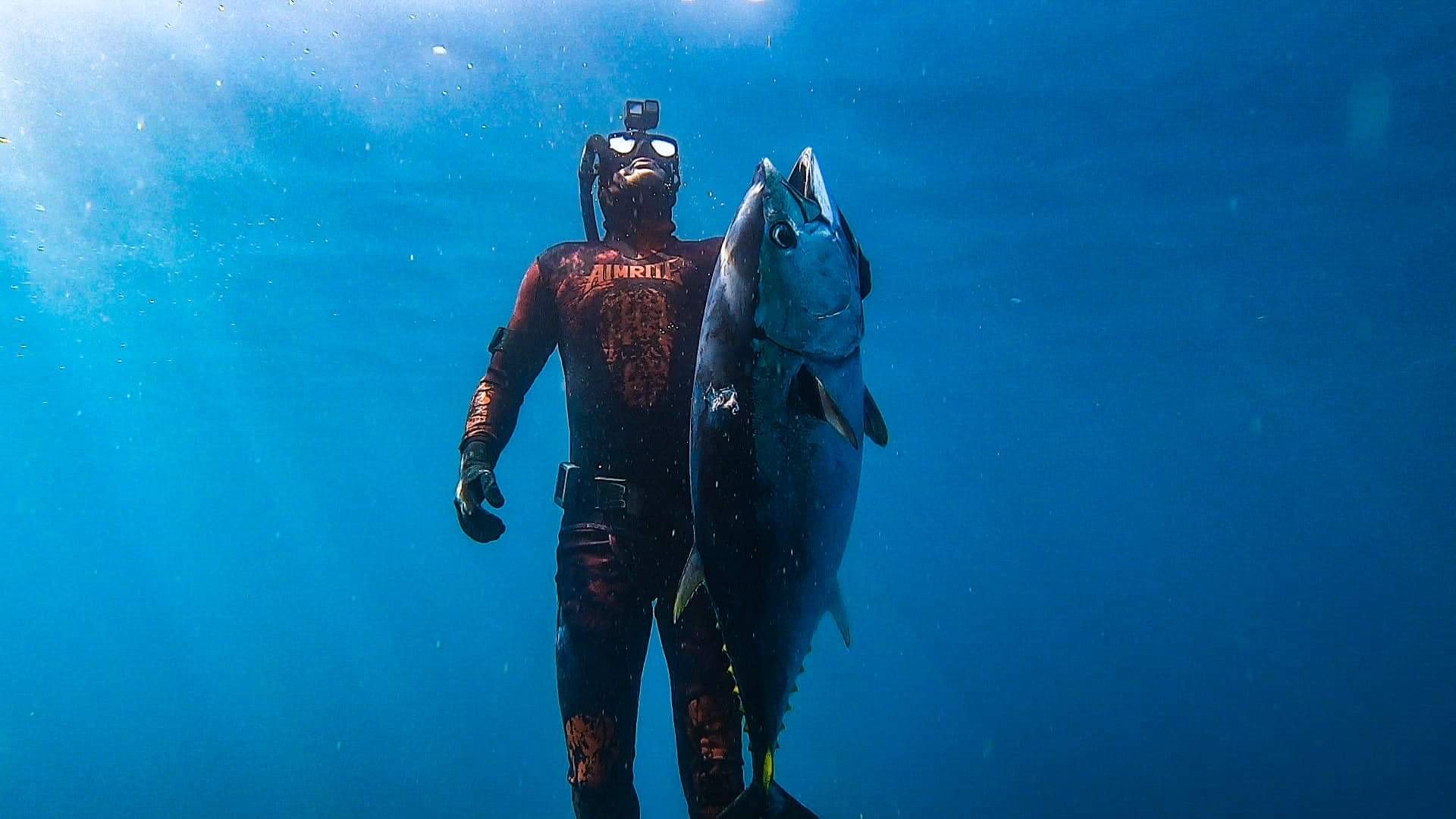
Photo: @wetmammal
And let’s not even start on the factory trawlers in international waters. I think that vegans and hunters will both agree that industrial food production – factory farming and overfishing alike – are shit for the environment and shit for the animals involved.
So while I never condone animal tourism, I would argue that spearfishing – when practised sustainably – is not animal tourism. You aren’t there to watch an animal suffer for your entertainment. There is also no barrier between you and the animal’s life.
There are no mental gymnastics of, “Well maybe the elephant really likes taking people for rides?” or, “Maybe that bear really likes dancing for people?”
No. You arm yourself with a speargun and a knife. You select the one or two fish that you want to eat – or provide for your community – and you kill it.
You understand the price of your protein.
Extra Tips on Ethics
I started spearfishing with the intention of getting ‘free’ food every once in a while. But the ocean is such a good teacher! I realised that nothing in life is free; you either pay for it with your money or your labour.
Instead of paying for your McChicken burger with your money, you pay for your fish with your labour.
Ethics is often a question of writing your own manifesto. And I’m not here to preach at you and tell you to become a spearfisher! But if you’re already interested in the lifestyle, I would consider these extra ethical points:
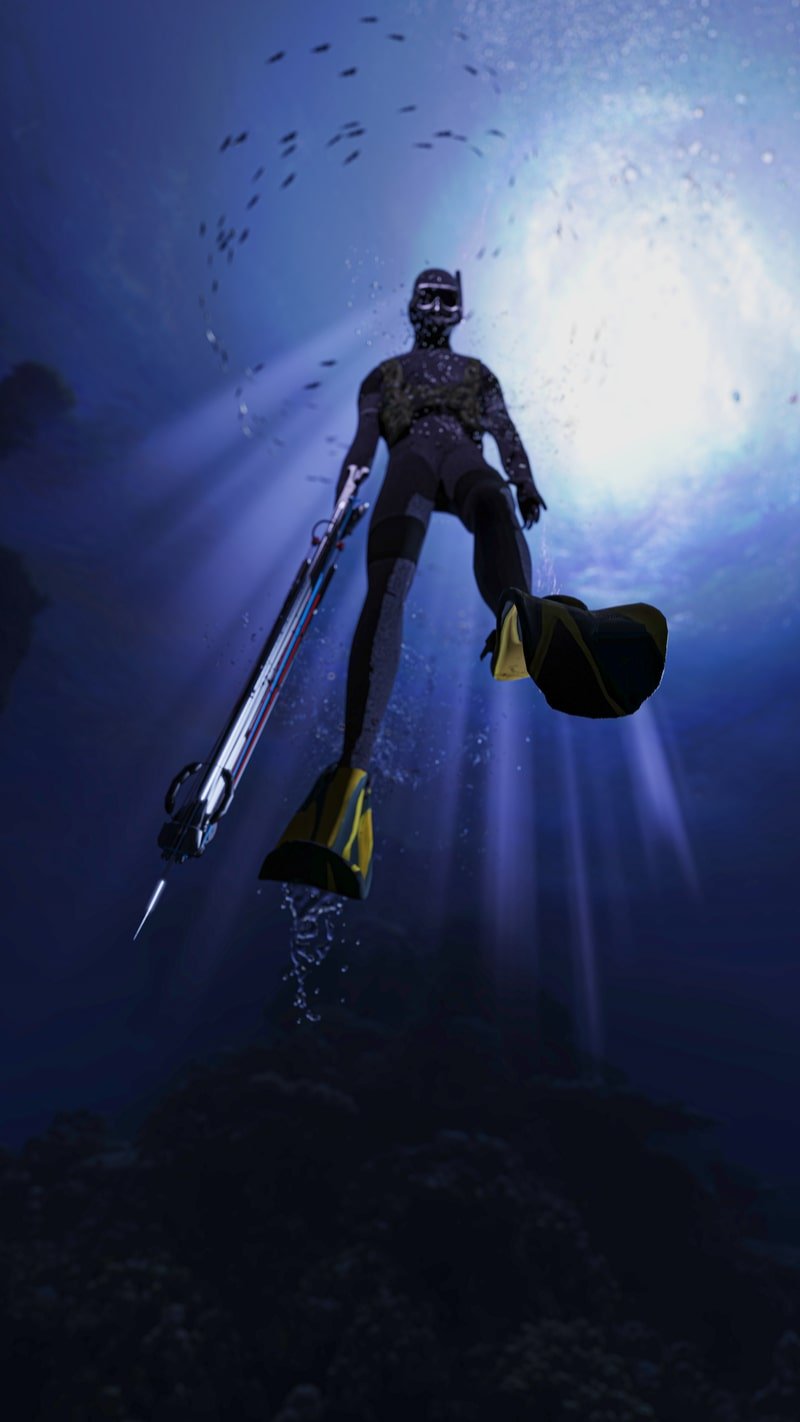
- Don’t fish on SCUBA. My personal belief is that spearfishing on scuba tanks is unethical. You remove a large portion of required skill and training from the activity, meaning it’s a lot easier to plug fish. (Also, just imagine a spear being shot into a scuba tank at depth – a recipe for a goddamn disaster!)
- Don’t take more than you need. Not from your own backyard, but also not from anywhere you travel to. Also, just because it’s legal doesn’t mean that it’s ethical. For example, there could be a species of fish that is globally vulnerable, but it is legal in this country or area to spear it. I would stear clear of the fish trying to bounce back from being overharvested.
- Leave no trace. Look, I reckon we’re all on board with leaving a world that our kids can enjoy. And I think anyone who spends enough time in the ocean – learning to spearfish or simply snorkelling – will be on board with packing in and packing out. Don’t leave your fishing line and associated crap out on the water, dudes. Not cool.
Want to save money on accommodation?
Enjoy 20% OFF on stays ALL around the world.
Ok Cool, But How Do You Spearfish?
Just go down there and stab the fish, right?
Yeah, basically. But there is an optimum way to spearfish! And that’s what you’re here to learn: How to Spearfish.
Editor’s Note:
I’m a pretty small looking girl. Quite a lot – but DEFINITELY NOT ALL – spearos are big blokes. Getting into the sport for me was a matter of hanging back and picking up tips from others before I really went for it.
Sometimes, I still feel a bit insecure asking what feels like a dumb question to someone more experienced.
But, as a mentor of mine once said, there are no dumb questions if you’re dead.
Sure, he had a penchant for the dramatics. But the advice is still solid!
There’s a fair bit of value in asking for advice. Of course, nothing replaces experience. But chilling on the boat, asking a couple of questions, and diving with a more experienced spearo, will have you chasing tastier fish in no time.
So basically there are three main ways to spearfish:
- On the surface
- Mid level
- On the bottom
However, there are a few other main types worth knowing as well.
There is nothing more humble than the rockhopper: someone who walks to the beach or headland, then enters the water and swims off.
This doesn’t require a big expensive boat, just your feet and some willpower.
Rock Hopping is simple and my favourite type of spearfishing.
This is where you head out on a boat/jet ski to a patch of reef that rises up from the ground underwater.
Reefs contain structure which creates movement or shelter in the water. Reefs are found all over the world and are not just found in the tropics.
Cold water reefs can be just as productive as warm water ones.
Common species include pollock, red rock cod, octopus, coral trout, snapper, and lobsters
Bluewater diving is when you head out into deep water. Often you cannot see the ocean floor, and it’s typically a boat journey away from land to get out in the open ocean.
Common species include tuna, wahoo, mackerel, marlin, and mahi-mahi.
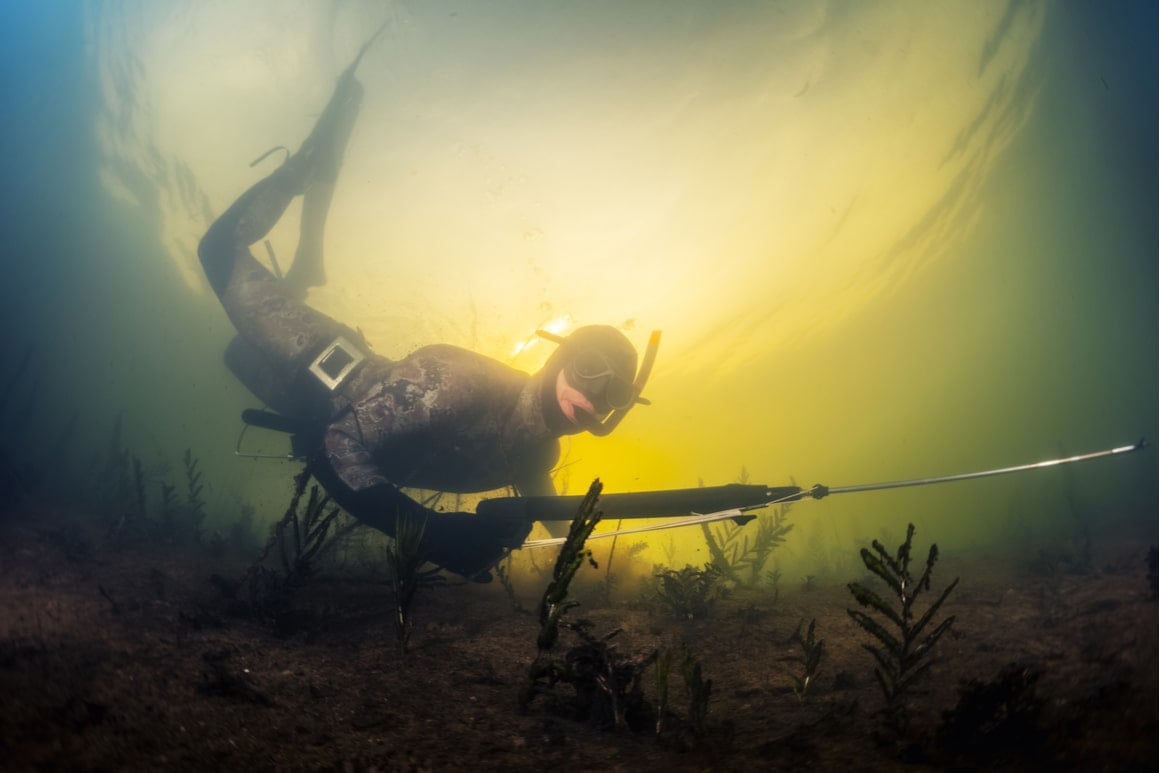
Overall, it’s pretty self-explanatory – you either shoot from the surface, or you practise breath-holding.
All methods have their pros and cons; it really depends on what type of fish you’re after! This is where alllllll the other skills of spearfishing come into play.
Does the fish like rocky reefs or kelp forests? Are they mid-water or bottom dwellers? How is the swell today? And most importantly, how confident are you feeling IN THAT MOMENT to free dive?
Regardless of where you are hunting the fish – you should always go in for a kill shot. Aim for the lateral line of the fish. While keeping in mind where the sharks are, try and gut and clean your fish as soon as possible. It will taste way better – and less will go to waste!
As a rule of thumb, the murkier the water then the easier it is to spook the fish. Remember, you’ve got to become a fish to eat the fish. 😉 So if you’re feeling a bit spooked, the fish will be too.
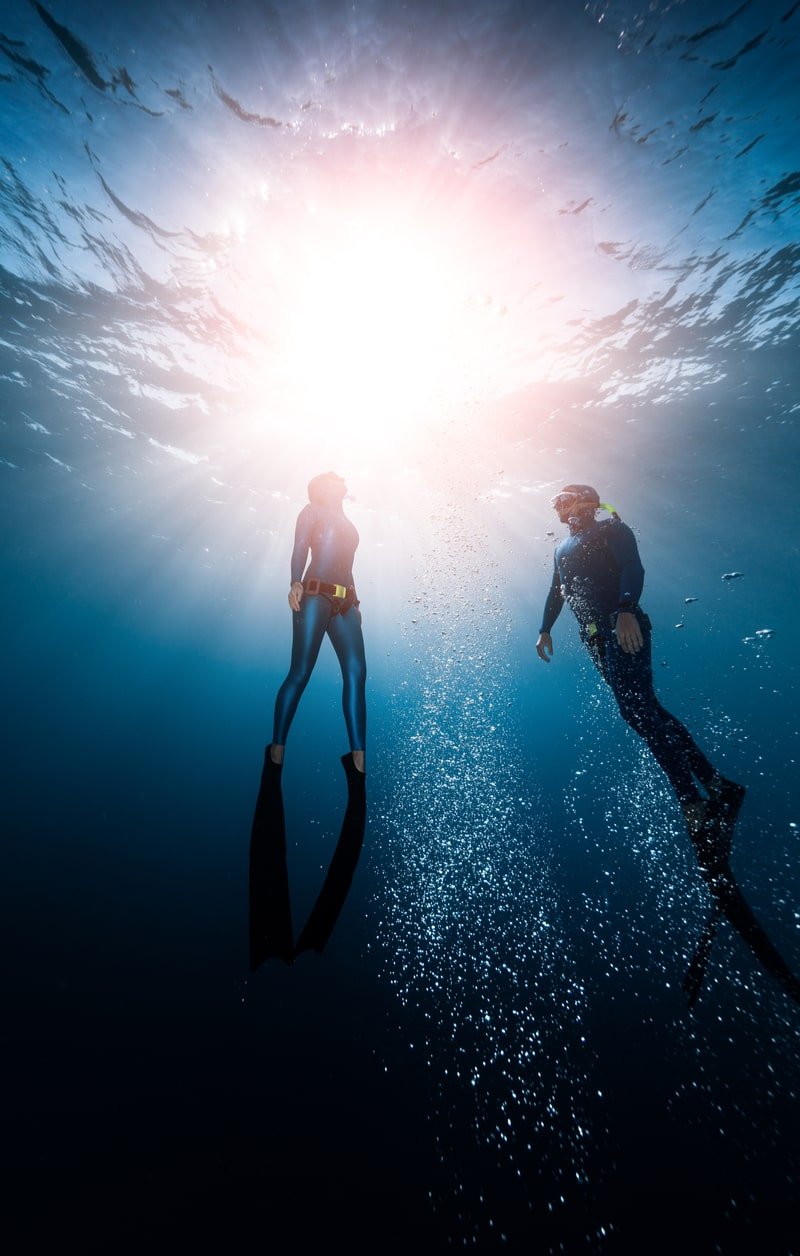
Try to be as quiet as possible by removing potential sources of bubble noise. Say buh-bye to your snorkel before you dive and try to stay as calm as possible.
This is where spearfishing becomes like a meditation. When you’re relaxed, you can dive for longer. When you’re relaxed the fish are less easily spooked. When you’re relaxed – life goes better!
So other than thinking like a fish, stalking the fish, and actually spearing the fish – first of all, you have to get to the fish. This means freediving.
I reckon learning to freedive makes learning to spearfish the most enjoyable. Yeah, the fresh ceviche is good, but being able to calm your mind and enter the depths of the ocean in one breath? Goddamn magical.
All is for nothing, though, if you don’t have the right gear! At one end of the spectrum, the wrong gear is an annoying inconvenience that stops you from a tasty dinner. On the other end, the wrong gear can be downright dangerous.
What Gear Do You Need to Go Spearfishing?
Straight off the bat, there’s nothing wrong with buying second-hand spearfishing gear. That’s how I started! Still, there’s a difference between haggling for a bargain and buying garbage that doesn’t cut the mustard.
When it comes to your gun, you should always buy from a reputable supplier and buy a gun with a good safety mechanism.
And don’t believe everything you hear – size matters. 😉
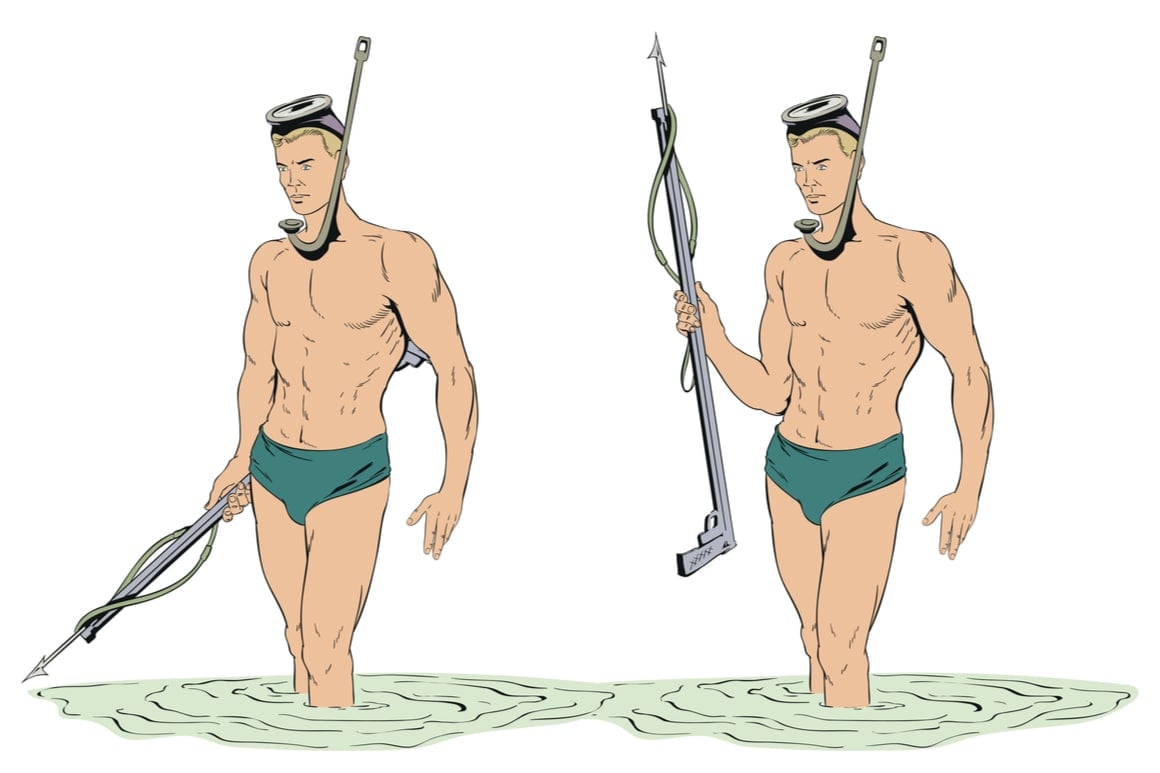
- Gun
The size of your gun will make a difference in the shooting range of your speargun. Work out what is best for your dive conditions and environment. In general, less visibility means a shorter gun; crystal clear waters generally means longer guns.
It has a long circular barrel which is powered with between 1 – 3 bands. The handle sits at the back of the gun.
Typical barrel lengths are between 50cm – 130cm.
This would be the most common speargun and definitely the one I would recommend to someone starting out in spearfishing.
A roller gun works similar to a standard speargun with the exception of the way that the bands operate.
The rubbers are pre-tensioned underneath the barrel and work up to the front of the barrel to the roller head and then back up to the speargun notches.
This is my preferred style of speargun as it allows you to gain additional power with a shorter barrel length.
This gives greater manoeuvrability and tracking underwater, which is great. A small gun is also easier to hide in seaweed.
Also known as a Hawaiian sling, the sling is a traditional set-up that is very simple.
They can often be broken down into smaller parts, making them easy to travel. Some countries around the world only allow this form of spearfishing.
These are often the cheapest form of spearfishing devices you can buy, so they typically act as a starting point.
A pneumatic speargun works differently from other spearguns as it does not contain rubber bands.
It uses compression to “load” the gun. Usually, a pneumatic speargun is “charged” before it is used.
This involves using a pump to create compression. The spear is then loaded into the chamber with compression until fired. Just remember that as a pneumatic tool, it loses power at depth.
Common for spearfishing in caves and around the Mediterranean.
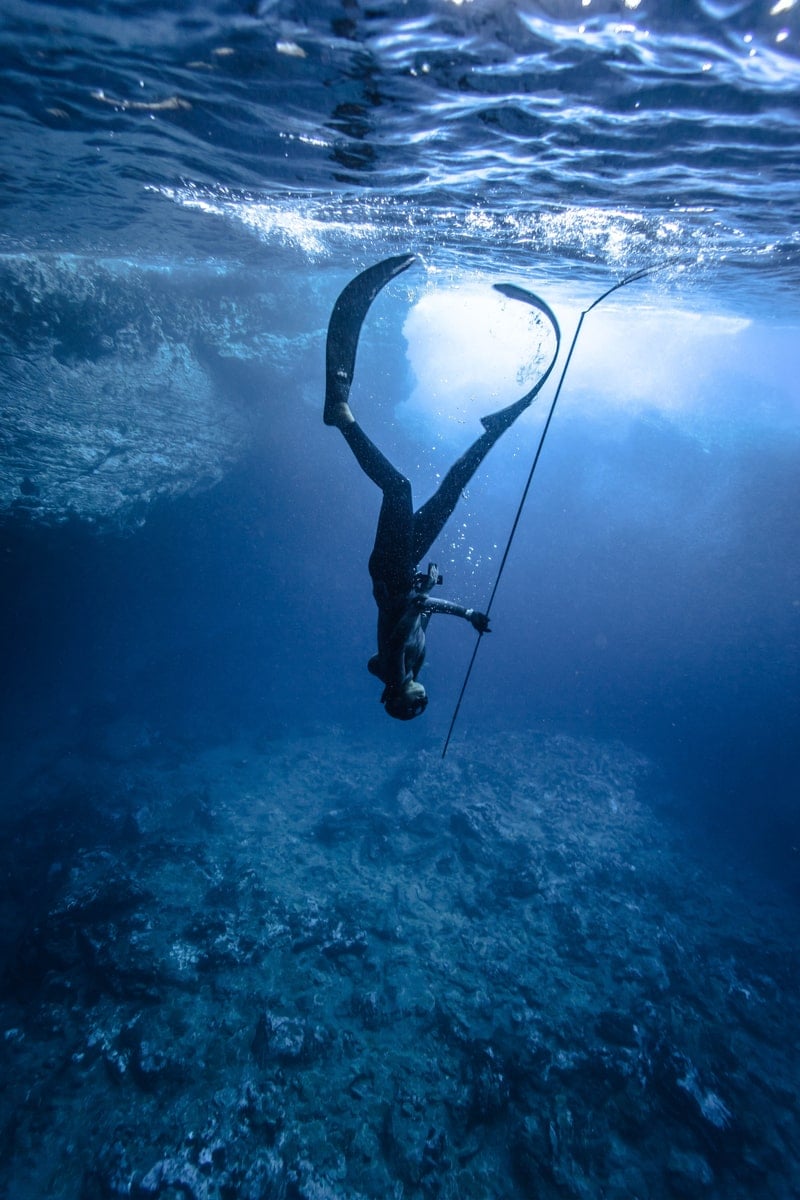
- Mask and Snorkel. I’d recommend getting a good mask from the get-go. You don’t have to spend hundreds of dollars, but buy a low profile dive mask that is specifically for freediving or spearfishing.
- Dive Knife. This is a super important piece of equipment from a safety and practical point of view.
- Dive Gloves. Any gloves will do, but some act to also keep your hands warm in cooler waters. Plus, if you’re rooting around for a lobster, gloves will prevent cuts and scrapes.
- Fins. I’d recommend carbon freediving fins for blue water and deep diving. However, plastic fins are better for rock and reef diving, and they are cheaper, so they’re good for your first fins.
- Weight Belt and Weights. Buy a specific quick release rubber or silicone belt. Quick release is important in the case of an emergency.
- Dive Weights. Diving with lead is necessary to help get you and keep you down at depth in the ocean. The more neoprene you are wearing, the more buoyant you will be, so the more weight you will require.
- Wetsuit or Lyrca Suit. Ideally, a spearfishing wetsuit is a two-piece. This type of wetsuit is preferred by spearfishers as it gives additional warmth for your core and can be mixed and matched based on water temperature.
BONUS TIP! A Winning Smile and Some Beachside Etiquette
Cover your spearguns when commuting to and from the water.
They can look intimidating and draw unwanted attention. Sometimes people want to play with the gun that is very much NOT a toy. And sometimes, the Karens of the world will want to report you to the police even when you are doing everything right.
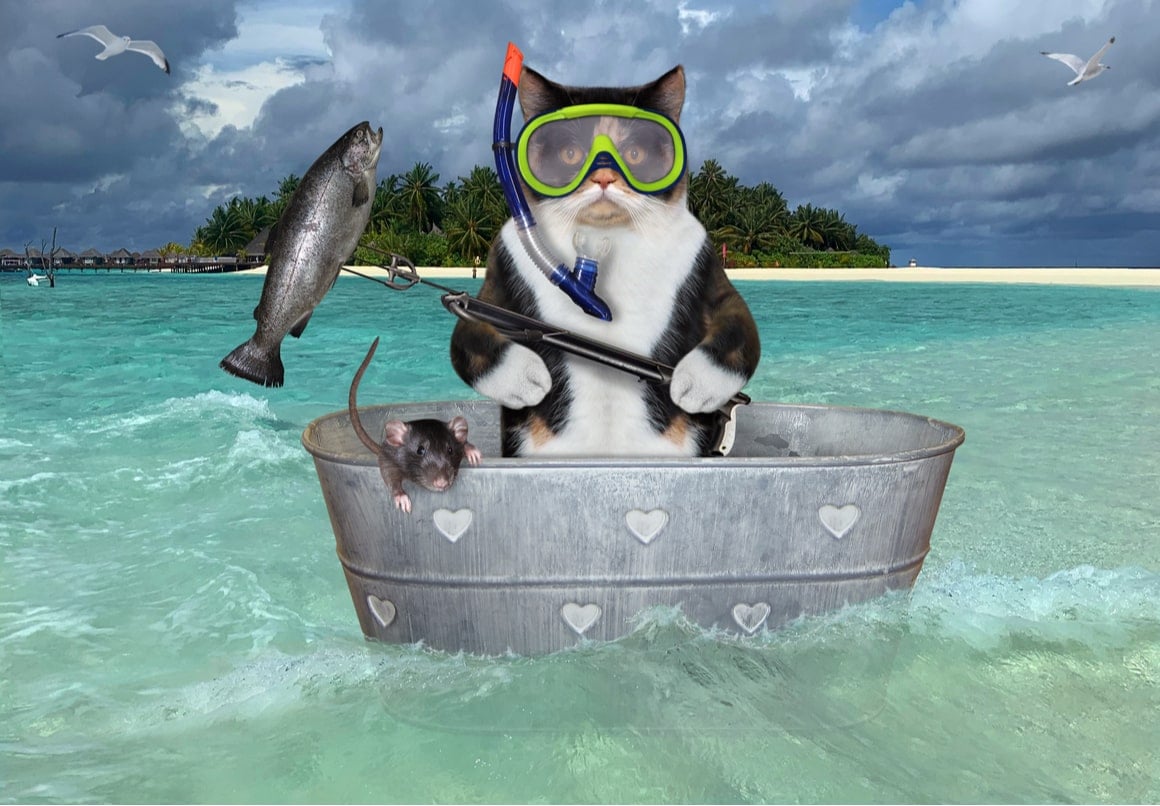
Do not just enter the water in the middle of a beach and don’t walk through crowded areas without your spear covered. Someone could run into it, or you might trip and spear an unsuspecting sunbather.
Remember, if in doubt, smile and wave boys. Just smile and wave.
BONUS TIP 2.0! Protect Yo’ Gear When You Travel
You need to protect your gear when travelling with it. Buttttttt, spearguns and spearfishing fins are quite long and are an awkward fit for regular travel bags.
I’ve used a variety of speargun bags over my time, and here are some handy tips.
Covering your gun with straight up plumbing pipes work well. It cost me $15, and I was able to securely ship my gun in this protective case for a number of years.
I then switched to a snowboard bag. Whilst this was good for protection, it didn’t really have the compartments I needed for my stuff.
Then I discovered SportsTube; it is a hard plastic, expandable carry case with wheels. This was a game-changer for me! Everything can be packed nice and tightly. It can be collapsed to a small size for storage when not in use, and the wheels are dreamy. Although they have rusted from saltwater, they still work like new.
FLIPPERS VS FINS
Okay, so it’s not super pertinent. But fuck it, it’s a funny debate.
Technically a flipper is a modified limb and a fin is not. When it comes to seals and dolphins then: seals have flippers and dolphins have a fin on their backs.
On account of technicality, the things a spearo puts on their feet are fins – because they aren’t modified limbs. But this is a hot debate in the world of diving.
You can call them flippers and get laughed off the boat – or you can make the case that since you’re trying to be a fish then those sexy pieces of carbon become a modified version of your leg. So fuck you, Darren: they’re flippers!
Anyway, flippers or fins. It’s one of those debates that’s sure to end up with some heated tempers. At the end of the day, call ’em what you want. Just bring home the fish.
Is Spearfishing Safe?
Safety is a relative concept. Crossing the street is dangerous. Sailing across the Pacific Ocean is dangerous.
But we look the beast in the eye, learn the risks, and how to mitigate them.
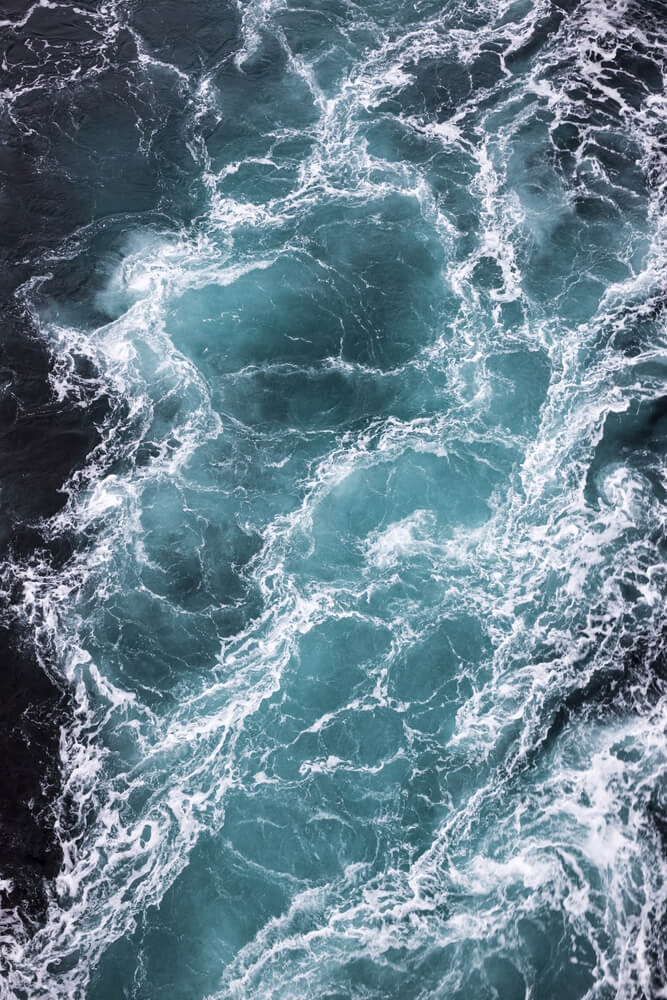
- Currents and Rips
Ocean currents are continuous directional movements of seawater that are moved by gravity and wind. Currents can vary in speed depending on the above and are more than capable of dragging people off into deeper waters.
- Shallow Water Blackouts
A shallow water blackout (SWB) is when a diver who has been holding their breath for a long period of time suddenly blacks out. It is by far one of the biggest causes of death within spearfishing. Despite its name, it can occur at any depth.
- Eardrum Damage
Equalising is a major component of freediving. Your body has cavities filled with air, such as your sinuses, ears, and lungs.
Whilst your lungs will equalise themselves, your sinuses and pressures in your ears will need to be equalised by you. The most common way to equalise your ears is by holding your nose and then trying to gently blow it out of your nose.
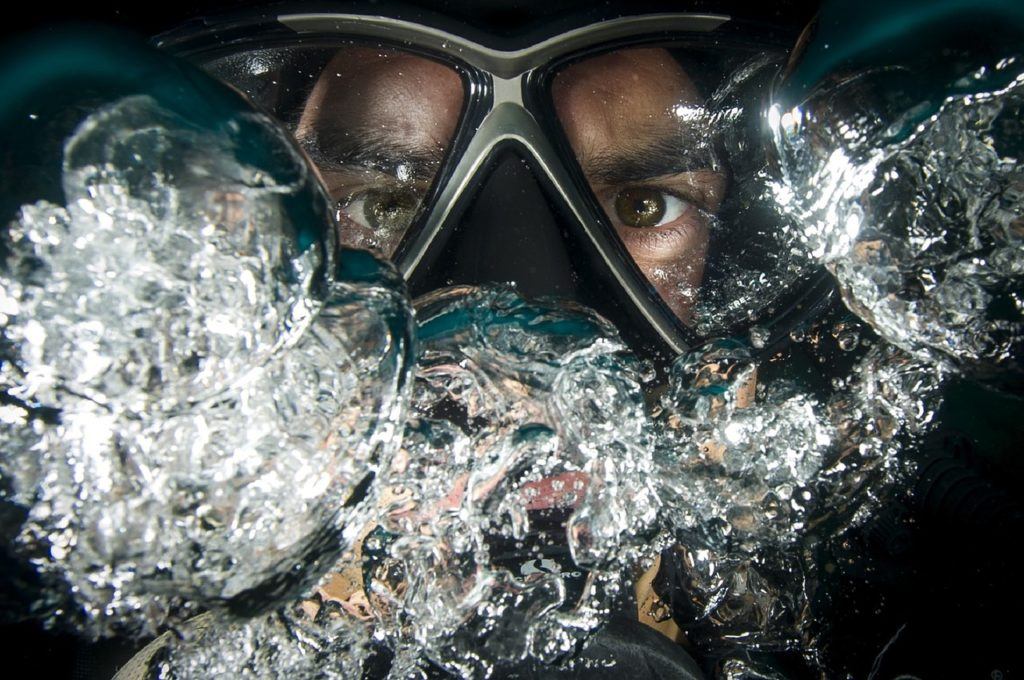
If you are having trouble equalising, DO NOT GO DEEPER. If you don’t equalise the air space in your ears, you may burst your eardrum.
Take it steady and only dive as deep as is comfortable.
- Watercraft
Boats and Jetski’s have killed numerous spearos. It’s just really hard to see a wee diver’s head as it pops up on a great blue expanse. So take care and avoid areas with lots of boat traffic.
- Marine Life
While sharks aren’t gonna come for you in any kind of Jaws-style showdown, you’ve still got to watch out for the buggers. I’ve had more than one fish taxed by a cheeky shark.
I remember borrowing my boss’s speargun, stalking this sweet yellowtail, and spearing the fish… Only for a reef shark to nab the fish right from the end of my gun!
I was wrestling with the shark on the end of my gun for a while because all I could think was ‘shiiiiiiiit, I can’t lose my boss’s gun.’
Luckily, I got away with the gun and a fun little story for the bar: y’know I wrestled a shark once? 😉 (Shhh, no one cares that it was a baby reef shark barely the size of my leg. I fought a shark guys.)
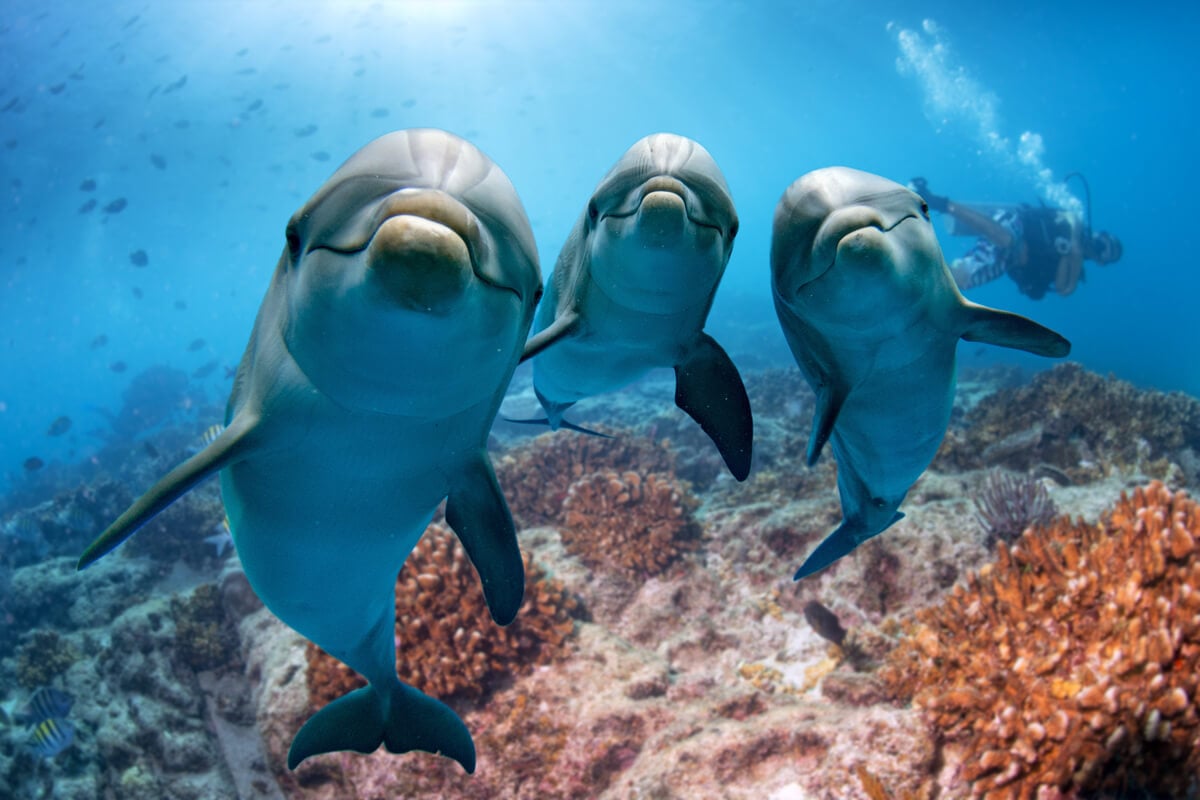
Other marine life – things like seals – are usually really cool to see while you’re out spearing. But if their pups are around then keep out of their way! Seal bites are not nice.
- Venomous or poisonous sea life
There are all sorts of venomous sea life – sea snakes and stonefish come to mind. There’s a quick way to go from chilling on the boat to chilling in the emergency room of a rural hospital – and that’s by getting stung by one of these suckers.
But there is also poisonous sea life to watch out for. The one I’d like to highlight is the dastardly ciguatera.
This tiny toxin called Ciguatoxin is originally produced by a microscopic algal species that looks more like a blob than anything else. It grows on and around coral reefs, which are eaten by small reef fish, which are eaten by larger reef fish.
The toxin doesn’t break down upon digestion. So by the time a tasty looking reef fish that you want for dinner swims past (i.e. a grouper) the potential for a sickening dose of ciguatera is present.
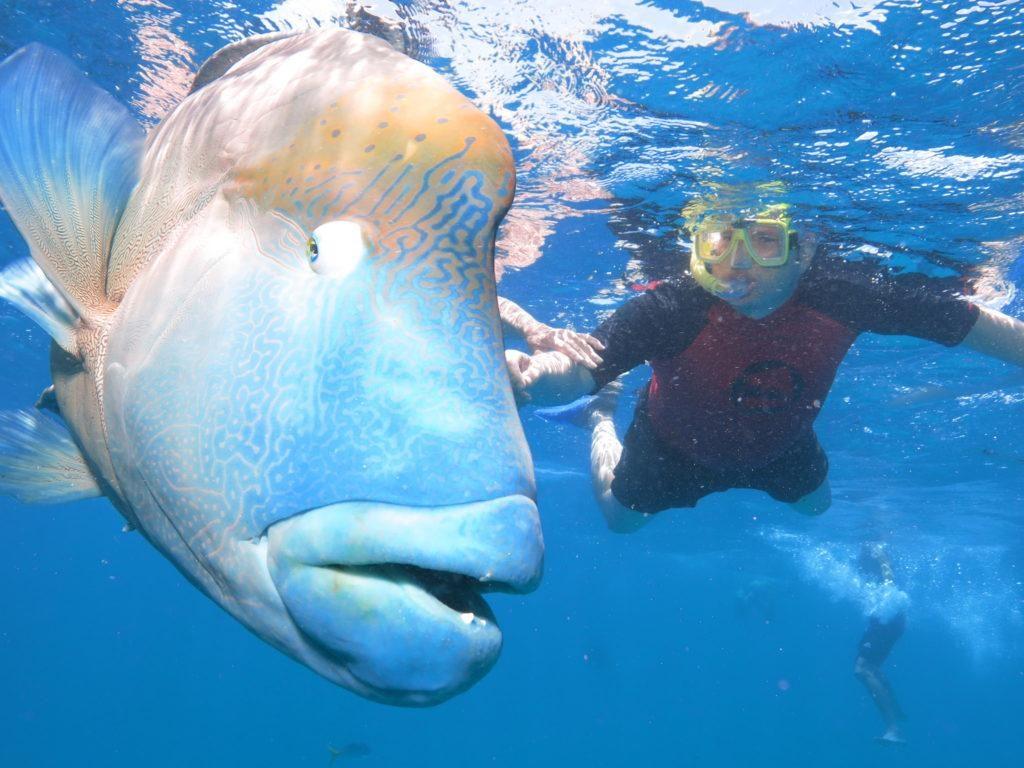
It is classed as a food poison, and if you’re anything like me, you’ll be like ha, food poisoning? I’ve got guts of steel mate, bring it on!
Nope. It’s like the worst ayahuasca trip: all vomiting, diarrhoea, and neurological symptoms, and no spiritual enlightenment. It’s coming out of both ends and the hot weather now feels like the arctic. You’re hallucinating and the only thing in your visions is a chorus of laughing monkeys.
So, you’ve been warned. Reef fish in the tropics and subtropics will likely have ciguatera. Go for the pelagic fish when you’re here to be safe. Or ask the locals if they know of any spots that certainly don’t contain ciguatera.
How to Mitigate the Dangers of Spearfishing
Fear not, intrepid spearo! There’s no reason for your newfound love of fishing and the ocean to be cut short because you blew up your eardrum while getting bitten by a shark and run over by a jetski.
1. Dive With a Float and Flag
All divers should use a dive float and flag. By having a float with a flag, it indicates to the mad jet skier tearing up the waters that there is a diver below. Hopefully, they pay attention to this and go slowly past where you are diving, thereby avoiding an accident.
A float also acts as a great rest. During a big tiring dive, you can hold onto the float and rest up.
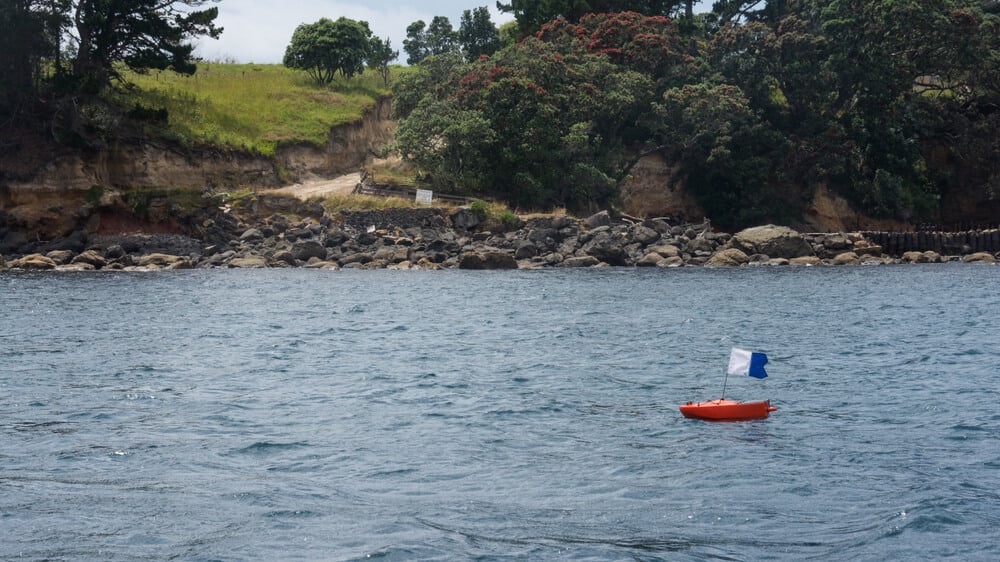
If you ever manage to drift off or get taken away with some current, a float and flag will help identify you from the air too.
Lastly, a float is a great place to store and attach your catch, especially in sharky areas. This will make your float a potential area of interest to the shark and not yourself.
2. Dive With a Buddy
Those who dive together survive together. Spearfishing is an activity that comes with an inherent risk.
A dive buddy means you have an extra set of eyes and hands able to aid any troubles that may occur, such as a shallow water blackout event. If you do blackout close to the surface, your buddy can immediately bring you back up and stop you from karking it.
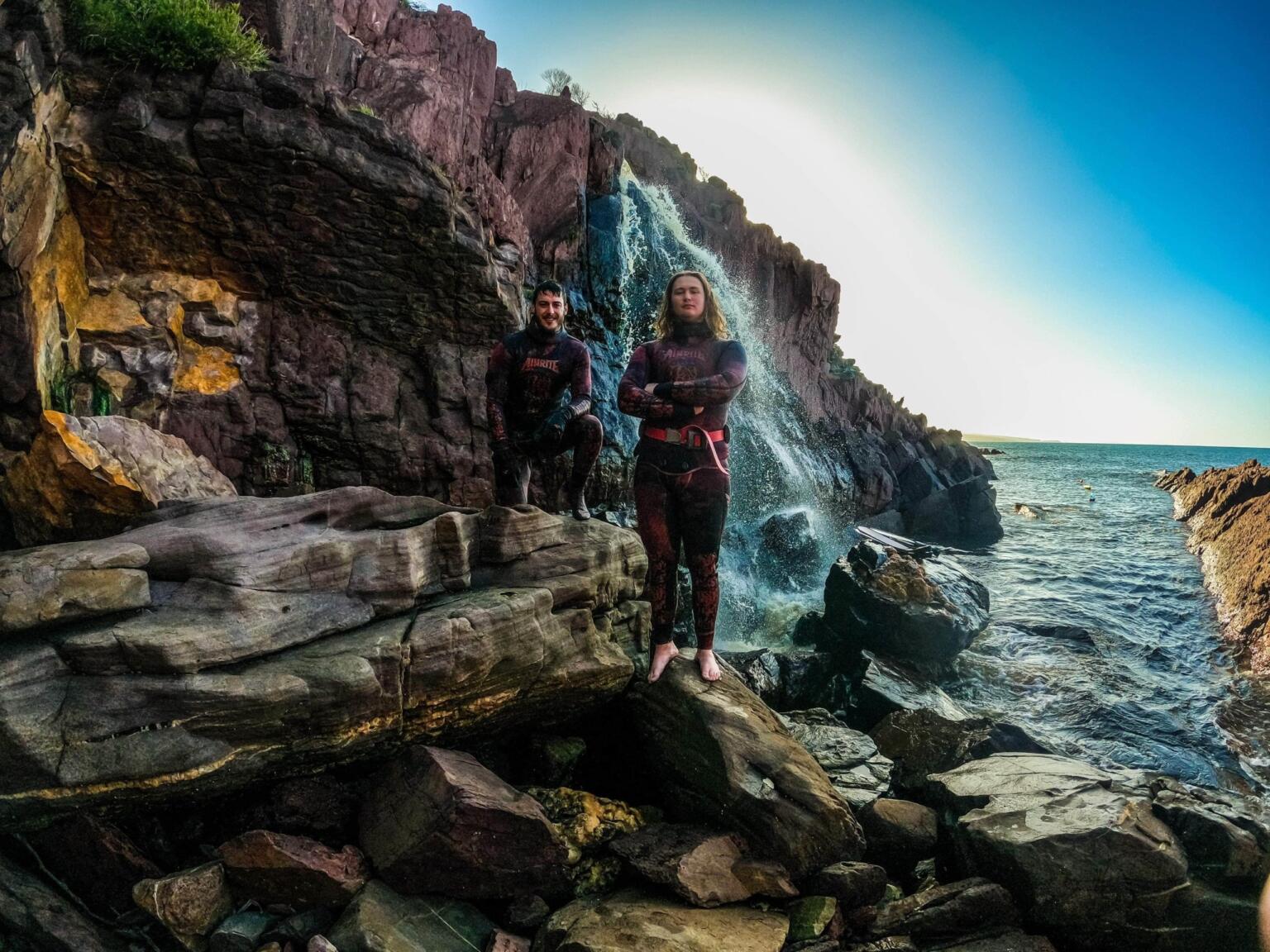
This is a tried and tested system, and it works well. If you are just getting into spearfishing, diving with another person is essential whilst learning the basics.
3. Respect For the Awesome Power of a Weapon
A little respect goes a long way. When you load the speargun, you are loading a weapon.
It might sound obvious, but don’t point it at anything you don’t want to kill. Yeah, your mate might be being a dick, but don’t point your gun at them.
Understanding the power of the ocean and the weather is important too. Many good fishermen have been lost to the ocean. All it takes is a series of unfortunate events and the emergency services have to make the dreaded phone call to your mum.
Actually, while we’re on the topic of safety – it’s not the sexiest tip, but getting some insurance to cover your ass while you’re out exploring is probably a good shout. That way you can go out and do your whacky adventures knowing that if shit does hit the fan, you’re covered!
ALWAYS sort out your backpacker insurance before your trip. There’s plenty to choose from in that department, but a good place to start is Safety Wing.
They offer month-to-month payments, no lock-in contracts, and require absolutely no itineraries: that’s the exact kind of insurance long-term travellers and digital nomads need.
SafetyWing is cheap, easy, and admin-free: just sign up lickety-split so you can get back to it!
Click the button below to learn more about SafetyWing’s setup or read our insider review for the full tasty scoop.
Where Can You Go Spearfishing?
Spearfishing is one of my favourite excuses to travel!
Travelling somewhere with the intention to spearfish adds a good kick of adventure to any trip! It’s also a great way to ethically budget travel. Once you’ve got your gear into the country, you’re plugging your own food and you don’t have to spend much at all.
It’s always really important to check the local laws and fishing regulations of these countries so that you don’t find yourself on the wrong side of the law. This can result in bribes being forced, fines, or even prison.
If you are fishing in areas that still traditionally harvest, check with the local leaders to make sure you have permission to fish the reefs. It’s good practice to offer to share your catch. Not only will it keep people onside, but you’re bound to make new travel buddies. Plus, the locals always know the best spots!
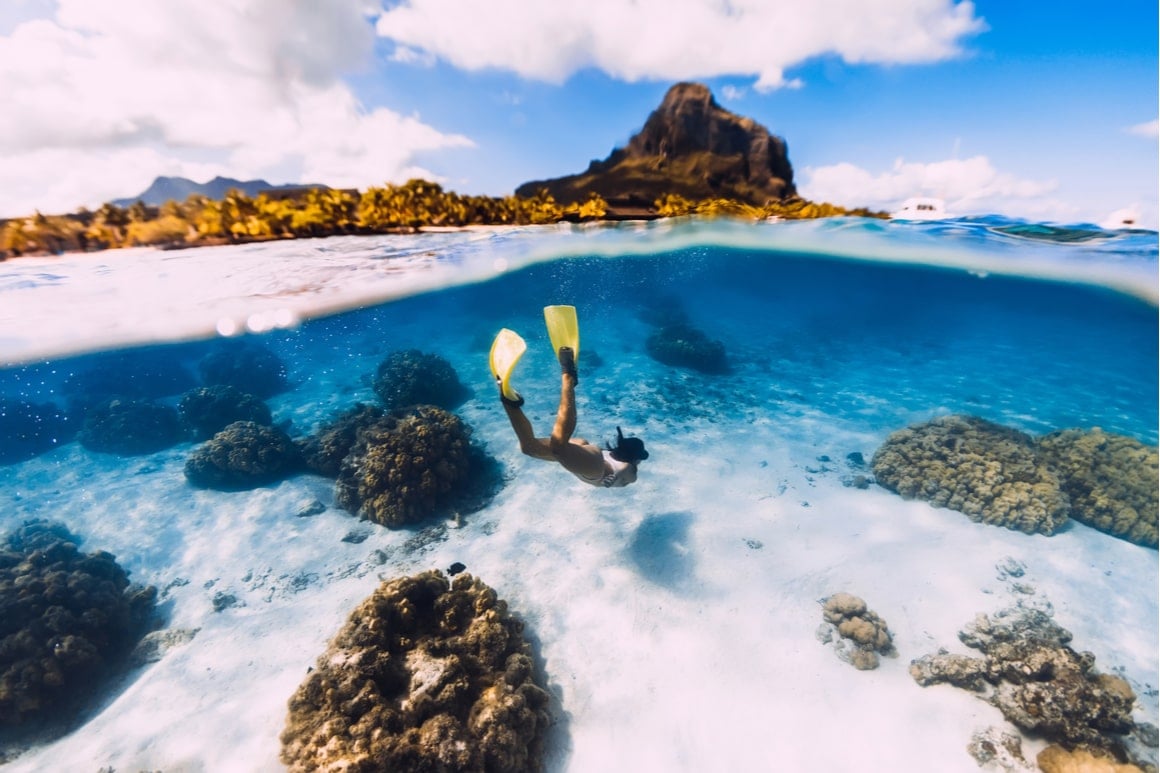
As with all the best travel, remoteness = greatness.
The further you get away from people and commercial fishing, the more abundant the marine life will be. This will usually provide you with better spearfishing opportunities than something really close to significant populations.
However, fish do move around. Thanks to this, even heavily populated areas such as Sydney, Australia, can still provide fantastic spearfishing opportunities.
There are many epic destinations to go grab some fish for dinner, but here are my top 8 spearfishing destinations!
#1 Indonesia
Backpacking Indonesia can be as rough or as touristy as you want. There are over 1700 islands in the archipelago, each wildly different from the next.
You can sit in a hammock on a barely inhabited island, thinking of all the things you can do in Bali – or you can go spearfishing.
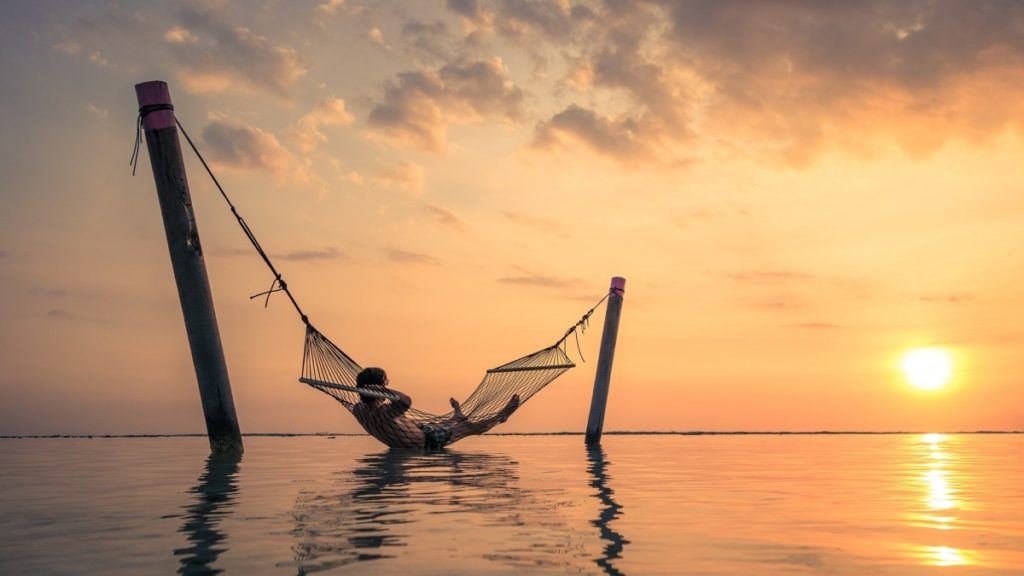
When it comes to spearfishing, the cost to charter a boat is very low, and locals can take you out and put you onto some excellent fish. Some of the epic species to go for here are mahi-mahi, tuna, and marlin.
Plus she’s warm with good visibility. Deeeee-lightful.
Kicking back Indo style means a feast of fresh fish on the beach, followed by an early morning hike of one of Indonesia’s many peaks – such as Mt Bromo.
#2 Florida
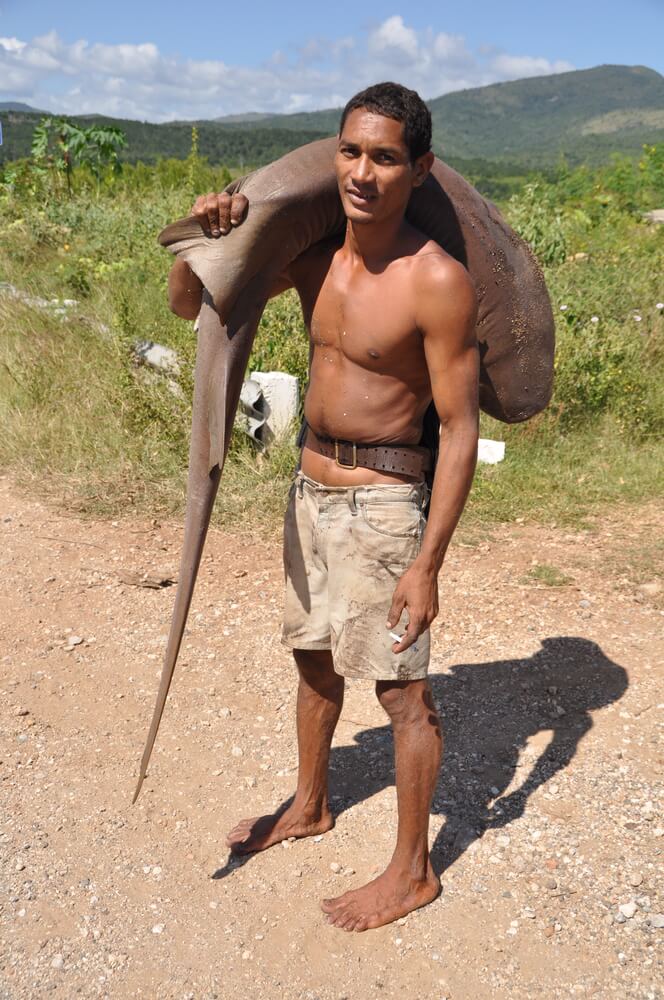
Probably the mecca for spearfishing in the US, Florida boasts beautiful clean waters with lobsters, hogfish, and groper in abundance.
Now, Florida is known for being extra even in America. So not only does that mean amazing spearfishing experiences, but some interesting chance encounters with the locals too.
A man with a fish slung over his shoulder walks into the bar with the American national anthem blaring. The start of a joke? No, just another morning in Florida.
The cost to charter a boat is pretty high when compared to a developing nation, but the number of charters available keeps the price competitive enough to make it worth a trip.
You can find a great place to stay in Florida which really caps off the experience.
#3 Hawaii
Despite being a popular spearfishing spot with lots of people using it as their main source of seafood, Hawaii still produces excellent spearfishing.
The cost of charters and accommodation can be significantly higher than in other parts of the world, though. Still, you can learn the art of budget backpacking by spearing your own food and staying in the affordable parts of Hawaii.
#4 Mexico
Mexico has definitely earned its place as an EPIC spearfishing destination! The Yucatan stands out as a warm and easy place to spearfish – with abundant marine life too.
There are many reputable spearfishing charter operators running in the country. Just check the local laws and restrictions before you set off on your adventure.
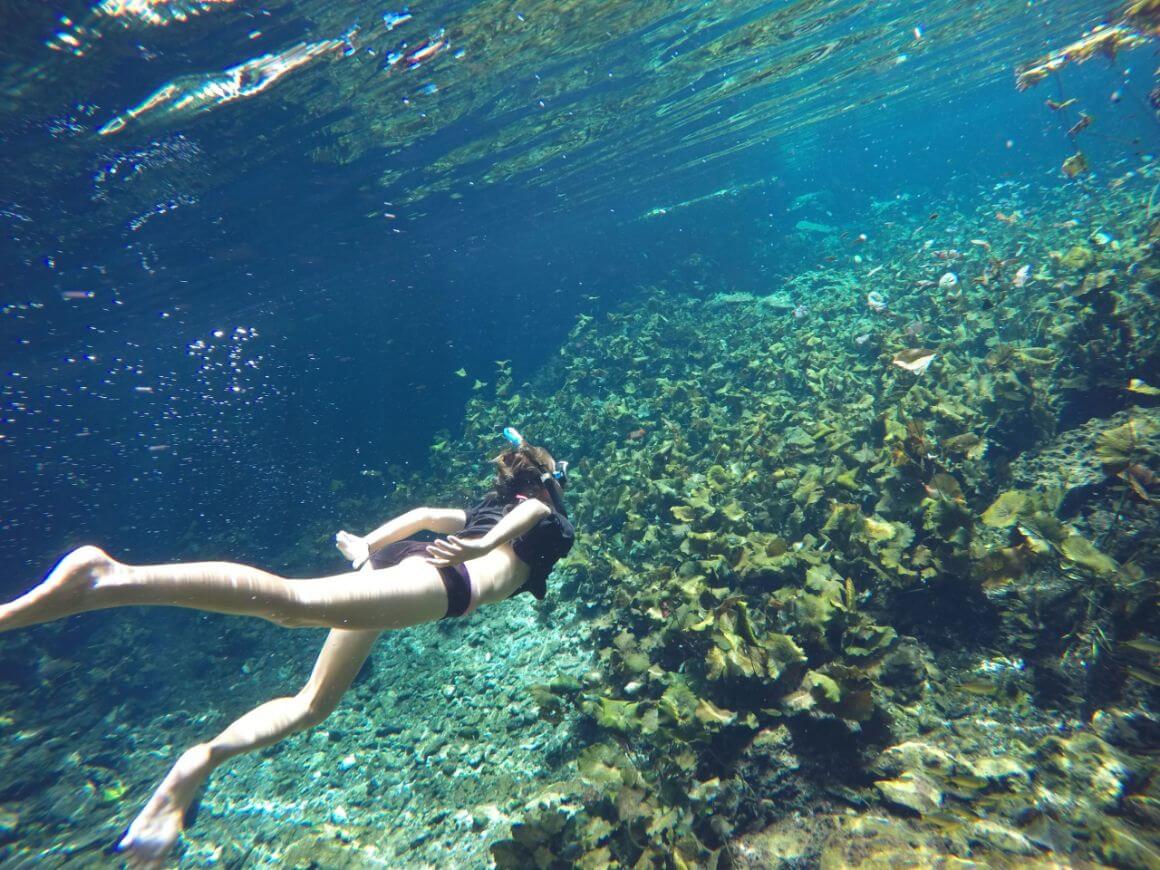
Photo: @indigogoinggone
Mexico is also a fairly cheap place to travel as well. Between diving in cenotes and spearing fish to your heart’s content, be sure to spend some time exploring Mexico City too. This country is just too damn good.
Plus – tacos! 😉 You could even try your own fish taco or ceviche recipe with something tasty you’ve speared yourself!
#5 Australia
Backpacking Australia leads one to believe that this really is the lucky country. This damn WONDEROUS island nation is surrounded by a wide variety of waters and with this even bigger range of fish species.
The fisheries in Australia are generally well managed – up there with the best in the world. Australia is definitely a spearfishing bucket list destination, with most people aiming to dive into the warmer waters of Western Australia and Queensland’s Great Barrier Reef.
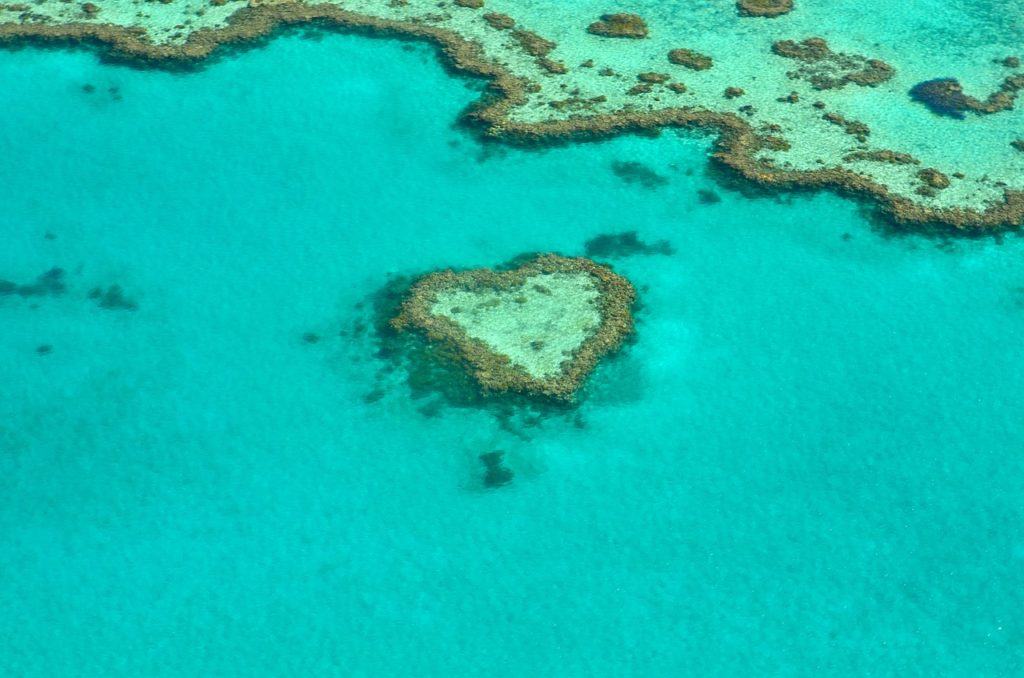
I live in Sydney, NSW and have had the pleasure of swimming with whales, dolphins, turtles, and sharks. I always manage to get a good feed from spearfishing the city’s beaches.
Australia cries out to be given the van life treatment. Pack your spearfishing gear and hit the road for one of Australia’s greatest road trips!
Each state within Australia has its own rules, and it would be wise to check to see if you require a licence for fishing. Each state has its own application that is free to download and will assist you with fish identification, areas you are allowed to spearfish, closed seasons, and sizes of fish.
#6 New Zealand
New Zealand was the first country I entered where the customs official was a spearo himself! He wished me luck finding a snapper and was adamant for me to try kina.
Spearfishing and living by the ocean is a way of life here. As you’ll learn backpacking in New Zealand, Kiwis are some of the friendliest folks on Earth!
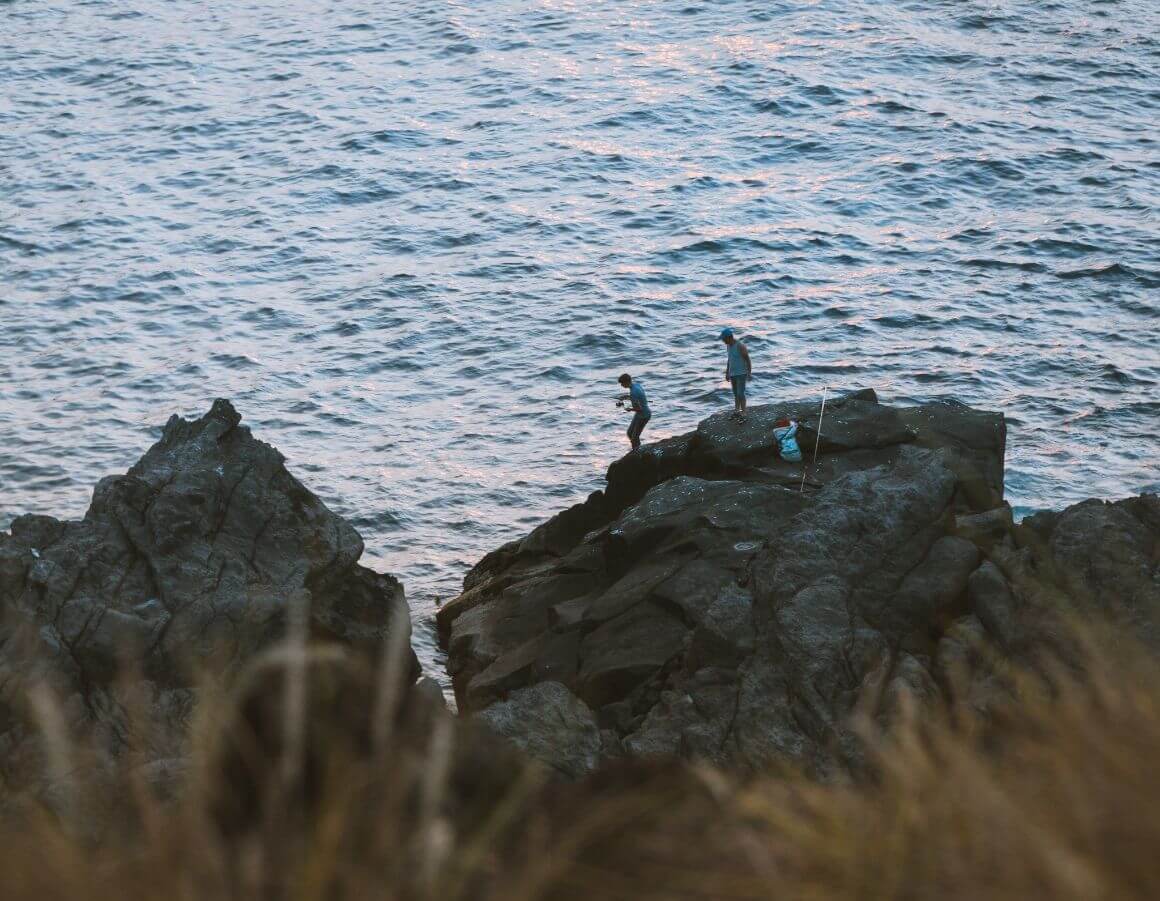
Photo: Ana Pereira
If you can get there and brave cooler waters, New Zealand has incredibly healthy fisheries that are well managed. Again adhere to local rules and regulations, but you’re in for a great time.
Diving in New Zealand is itself pretty epic – but I’d say that their spearfishing is even greater. It’s also an incredibly picturesque country that deserves an epic road trip!
#7 Tonga
A beautiful chain of islands with some truly epic reefs. Tonga has a tropical climate with lovely warm waters.
I’ve had great fun spearfishing over here. Plus, there are excellent spearfishing charters.
The only problem is the flights and weight allowance getting there can make this spot expensive to get to. But dogtooth tuna is a highly targeted fish.
#8 Norway
Backpacking Norway is great because you have easy access to glorious remoteness. One day it’s the fjords, and the next it’s ice diving for halibut!
Norway in recent years has become a spearfishing destination due to its big fish – the Halibut. If diving in really cold waters with ice is your thing, Norway could be the destination for you!
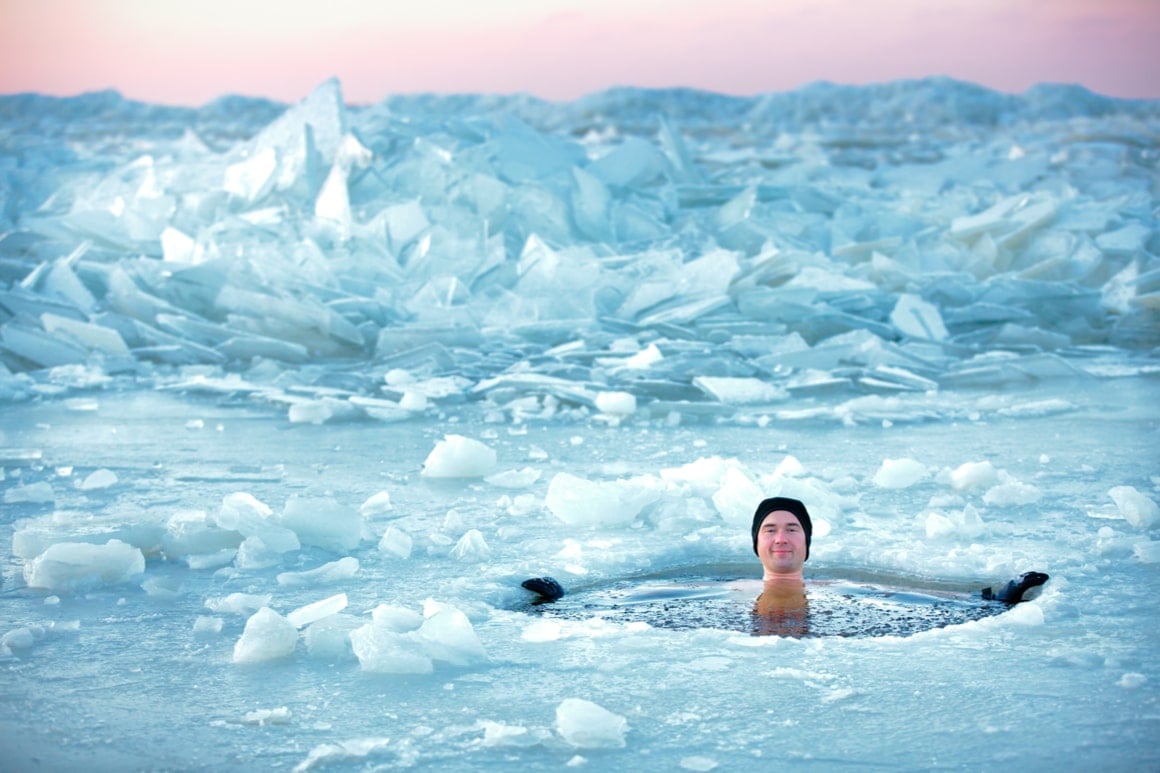
Be sure to pack a really, really warm wetsuit. I mean, I think you have to be a bit mad to enjoy ice diving. But the things we do for a tasty bit of fish, hey?
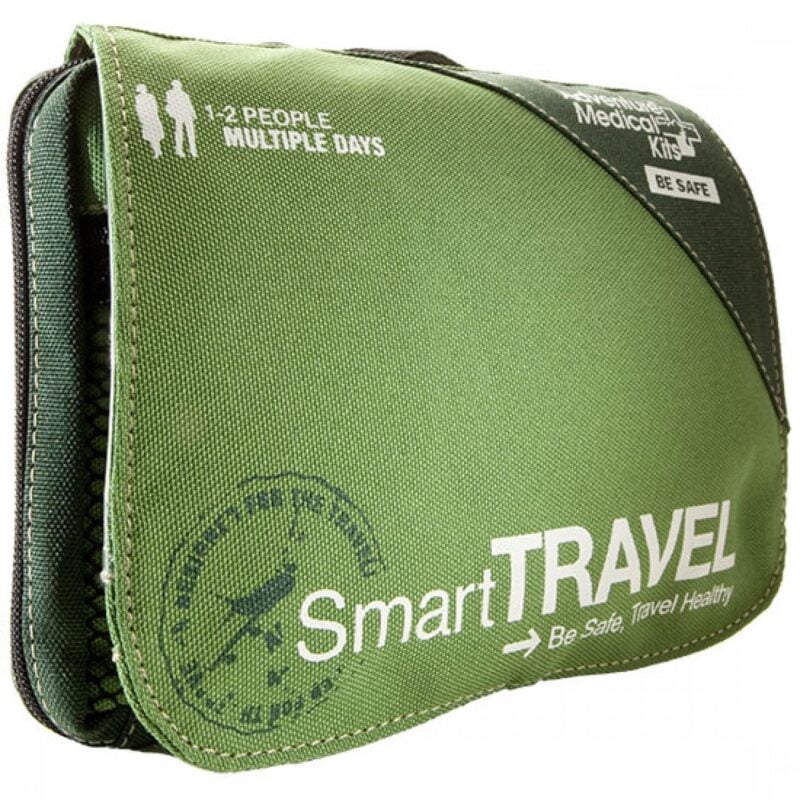
Things go wrong on the road ALL THE TIME. Be prepared for what life throws at you.
Buy an AMK Travel Medical Kit before you head out on your next adventure – don’t be daft!
Buy on REITalk Like a Spearo
Spearfishing – like any activity – has its own culture. Once you get into it, you’ll want to be talking the talk as well as walking the walk. So I gotchu covered with a bit o’ spearo slang.
Learning slang can be just as hard as learning any travel language! It also changes region to region within the world.
- Vis: Water Visibility AKA how far you can see underwater and how clear it is. E.g. “Man, that vis was like swimming in pea soup.”
- Burley: An action of chopping up other fish in the attempt to lure in bigger predatory fish.
- Taxed: When you have your fish stolen by another ocean predator, most commonly a shark. E.g. “Just as I was getting onto the boat, a huge shark came up and taxed my fish.”
- Stoned It: When you spear the fish in its brain or heart, and it’s instant death. E.g. “I stoned the fish.”
- Donkey: Refers to a fish that is exceptionally large or old. E.g “Mate, you should have seen this donkey snapper chilling in the surf.”
- Lube: A lubricant often a mix of soap and water to help people put on their suits. E.g “Whoops, I forgot my wetsuit lube… this is gonna hurt.”
- Old Boot: A fish that is not known for being good eating.
- Plugged: An expression for shooting a fish. E.g. “I plugged this fish at about 13m.”
- Lat Line: The lateral line of a fish is often used to help target and secure fish with shot placement.
- Man in Grey: Another phrase for sharks.
- Bust Up: A feeding activity by fish where they force smaller fish up to the surface of the water resulting in epic displays.
That’s a Wrap on How to Spearfish, Folks!
Like I touched on earlier in the piece – nothing replaces experience! So, now that you’re armed with the basics of spearfishing 101 it’s time to hit the waters and find yourself some dinner.
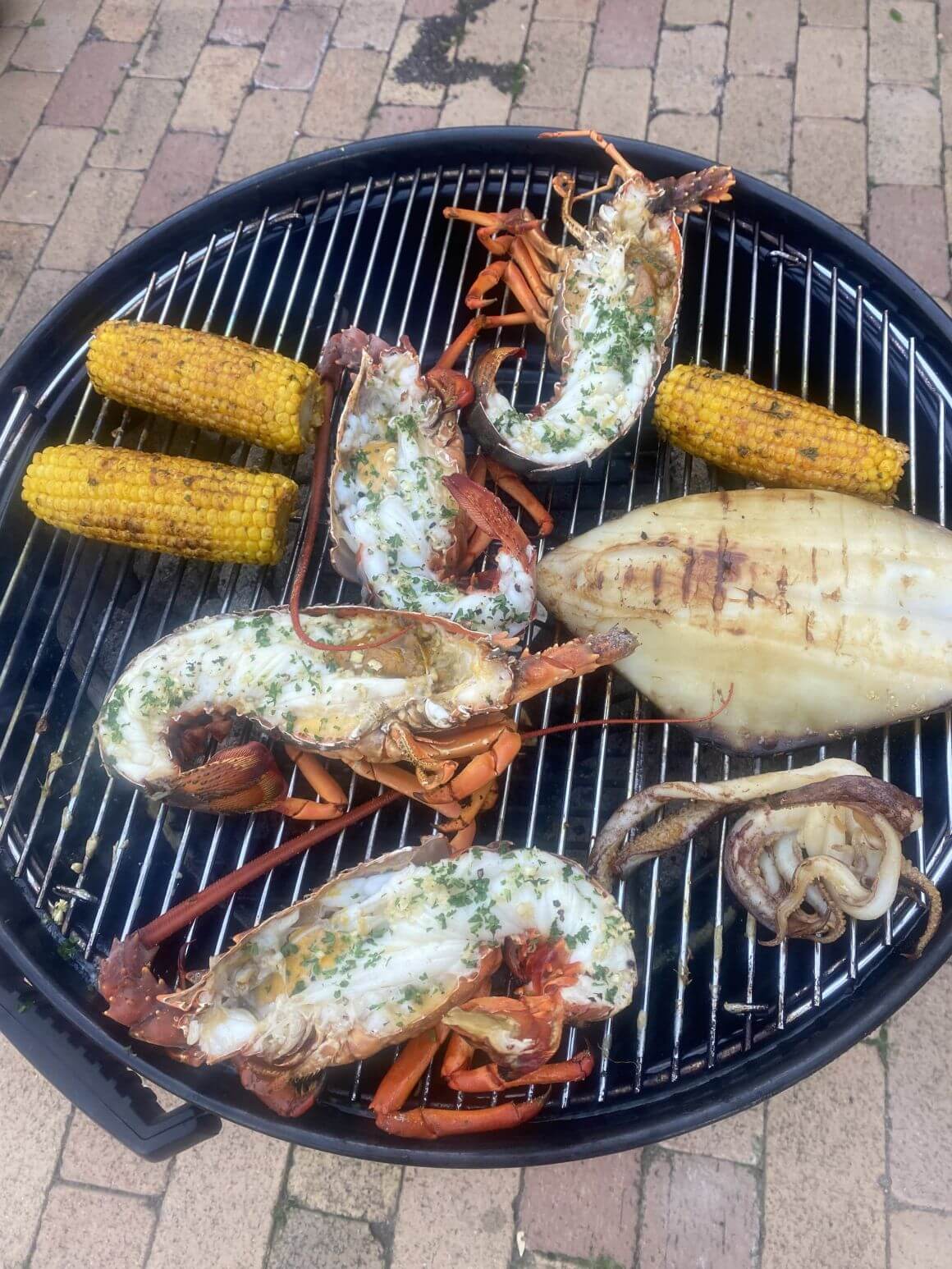
Photo: @wetmammal
Time to make the leap from landlubber to mermaid swimming fish catcher extraordinaire.
Spearfishing is a practice that is like no other. It has you engaging with ethics, with conservation, with hunting, with patience, with freediving, with meditation – and of course, with cooking.
Because while the swimming keeps you fit and the diving keeps you calm; while the weather keeps you guessing and the currents keep you alert; at its core, spearfishing is about fresh fish in the fire.
It’s about that little touch of lemon juice or mango with fish that you earned. It’s about your mates sitting together going, “Yeah, nah, that’s bloody good.”
Learning to spearfish touches on the core of what it means to be a broke backpacker. Your mission to save a few dollars ends up giving you mad opportunities to grow as a person and connect with the community.
Whether you choose to spearfish on the balmy shores of an island or deep in the ice-covered waters of Norway – you know you’re in for a good time.
Good luck, and watch out for the men in grey! 😉
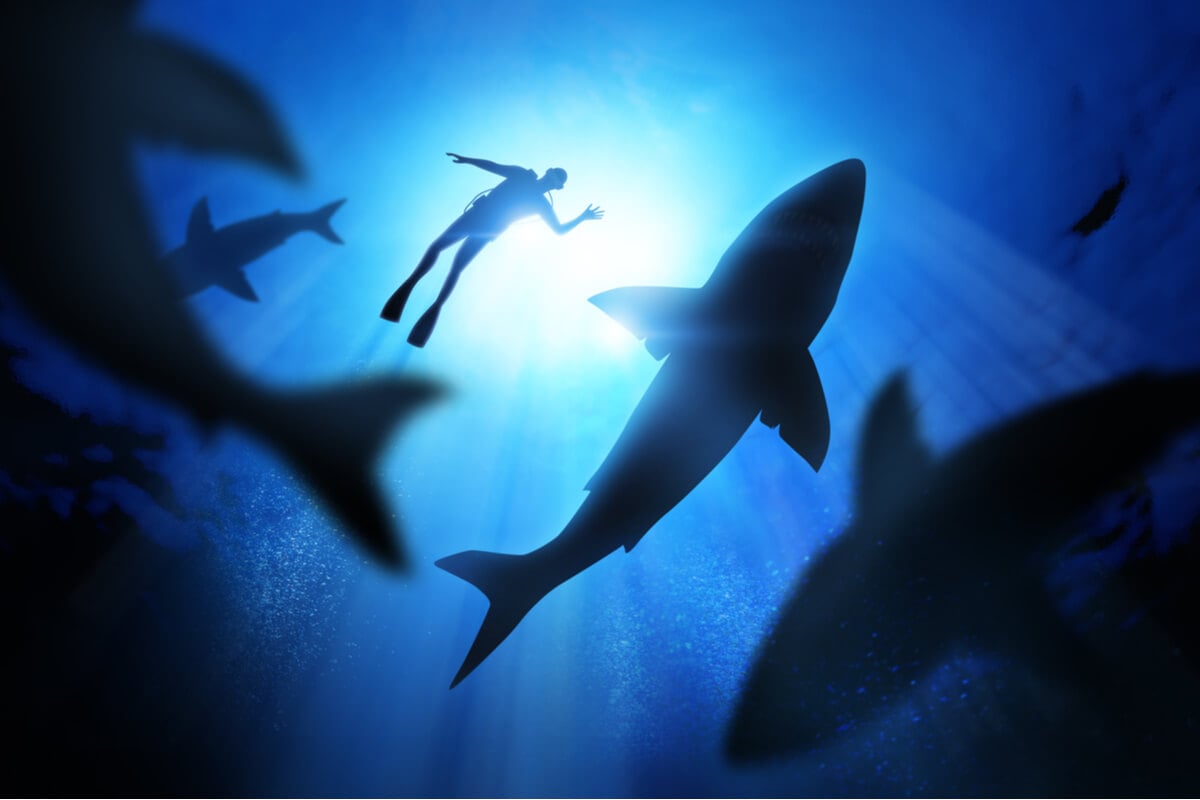
 Sam Clothier was in the frigid waters of Southern England learning to hunt fish ever since he could get his hands on second-hand gear at the tender age of 13. The ocean has had a hold over him ever since he crawled out of the beaches of Devon with his first fish in hand.
Sam Clothier was in the frigid waters of Southern England learning to hunt fish ever since he could get his hands on second-hand gear at the tender age of 13. The ocean has had a hold over him ever since he crawled out of the beaches of Devon with his first fish in hand.
As he grew older, he became attracted to Australia – as all great spearfishermen are. Again, like all the great spearos, he’s also a badass free diver and knows how to turn what he catches into scrumptious meals. He has travelled to and spearfished in more than 20 countries! Legend! These days he runs a youtube channel that showcases epic spearfishing action – from unique coastal encounters to the tasty cook ups at the end.
Sam provided us with top notch spearfishing copy which Indigo Atkinson then spun into a Broke Backpacker style How-To Guide.
She’s also done a little harvesting of seafood and was supremely pleased to see that her home stomping ground (Western Australia) was listed as a pivotal moment in Sam’s love affair with spearfishing.
You can find Sam online on his YouTube, Instagram, Facebook and his website.
Buy Us a Coffee!
A couple of you lovely readers suggested we set up a tip jar for direct support as an alternative to booking through our links. So we created one!
You can now buy The Broke Backpacker a coffee. If you like and use our content to plan your trips, it’s a much appreciated way to show appreciation 🙂


